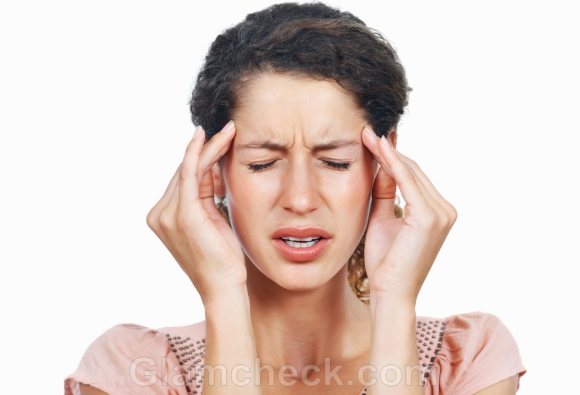Common headaches afflict people from all classes and all races. The headaches related to tension and stress are the most common ones and are experienced by most people with a relatively higher frequency. One of the less common types of headache is the Cluster Headache which is experienced by a very minute fraction of the population, only around 0.1% of the populace are affected by cluster headaches. The pain can be so extremely unbearable and excruciating that it is also known by another term – ‘Suicide Headache’.
 Cluster headache derives its name from the fact that the pain attacks are usually clustered, and the bout lasts for a few weeks, sometimes a few months after which the patient remains pain free for a given period of time.
Cluster headache derives its name from the fact that the pain attacks are usually clustered, and the bout lasts for a few weeks, sometimes a few months after which the patient remains pain free for a given period of time.
How to Identify Cluster Headaches – Signs and Symptoms
Cluster headaches vary greatly from migraines, sinus headaches and tension headaches and the symptoms presented by this form are so unique that it is possible to notice that something is amiss and look for help outside in dealing with the situation. Cluster headaches are quite unique and present themselves in an extremely dramatic fashion.
Unlike the other forms of headache where the women have taken a beating, cluster headaches tend to affect men more, compared to women. It is most common between 20 and 50 years, but younger as well as older patients have been diagnosed with cluster headaches. Women are more susceptible to cluster headaches after the age of 50.
- Unilateral pain: The pain is usually unilateral. In the subsequent attacks the pain is usually focused on the same side of the head. Some times it may spread from one side to the other, but this is reportedly very rare. Unilateral pain is quite common to most forms of headache, but cluster headaches have quite a lot of distinguishing factors that help in its accurate identification.
- Intensity of Pain: The intensity of the pain is immense, compared to all other forms of headache. The pain can be extremely sharp, excruciating and torturous. Medical experts suggest that the pains caused due to cluster headaches are by far the worst pain experienced by man. The pain usually is centered on the region of the eye and sometimes experience pain at the far back end of the eye.
- Duration: As the intensity is extremely high, the pain lasts, sometimes, for as short as twenty minutes or even less where as sometimes it can drag up to three to four hours or more.
- Onset of Pain: There are no preliminary warning signs, such as those seen in the case of Migraine, before the onset of the attack. The onset is rather rapid and stabbing pain is experienced around the eye region and the pain may spread to the rest of the face as well.
- Periodicity: One of the most distinguishing characteristic feature of cluster headaches is the periodicity of the attacks. The attack bouts are extremely periodic in the sense, the pain resurfaces at the same hour of the day and lasts for the same duration as the previous day. Apart from these periodic attacks, an individual may also experience other instances of pain during the day.
- Timing: The pain sets in at the later part of the day, usually at nights, where an increased percentage of patients report pain between nine at night and ten in the morning. These attacks are initiated after the person falls asleep, during the REM (Rapid Eye Movement) state of their sleep. Sometimes the pain may be so severe that the persons are awakened on account of it.
Associated Symptoms and Features
- Tearing of the eyes on the affected side is not very uncommon
- Droopy eyelids and differential facial pain are useful in diagnosing Cluster headaches
- Nasal blockage and sweating are quite common when the bout sets in
- With the onset of the attack, there is a rapid increase in the patient’s heart rate
Types of Cluster Headaches
Cluster headaches occur in two forms;
- Chronic and
- Periodic or Episodic.
The periodic of episodic type of headache is characterized by a cluster of a few weeks or months during which the pain appears frequently. After the bout is over, the patient has a attack free period that differs from one person to another. The difference between this and the chronic type is the fact that persons suffering from chronic cluster headaches experience the pain on a regular basis without the pain free ‘remission’ period enjoyed by those who suffer from periodic cluster headaches.
What Causes Cluster Headaches?
Abnormal Hypothallamus: It is widely believed that abnormalities in the hypothallamus area of the brain is the main cause of cluster headaches. With the help of neuroimaging, experts have been able to link the hypothallamus region with the excruciating pain experienced during the attacks.
Alcohol and Smoking Habits: Patients have reported extreme sensitivity to alcohol and usually the bout is initiated within a very short time of alcohol consumption. Tobacco use is also believed to be a possible cause for cluster headaches and its aggravation. However, the alcohol and tobacco theory are yet to be proved conclusively.
Genetics: A hereditary link cannot be ruled out here although there has been no conclusive discovery about any specific gene or its abnormality causing this disorder.
Diagnosis
Cluster headaches usually go unnoticed as patients confuse the symptoms with other severe forms of headaches. It is best to consult a neurologist and get the pain diagnosed accurately to aid in the treatment process.
Treatment
 Unlike other forms of headache, over the counter drugs have absolutely no effect, whatsoever, on the pain. Abortive drugs, the drugs that help abort the attack and prophylactic drugs, the ones that prevent any further attack are the ones most commonly used to treat the symptoms of cluster headache. Sometimes steroids may be used to
Unlike other forms of headache, over the counter drugs have absolutely no effect, whatsoever, on the pain. Abortive drugs, the drugs that help abort the attack and prophylactic drugs, the ones that prevent any further attack are the ones most commonly used to treat the symptoms of cluster headache. Sometimes steroids may be used to
- Aerosol doses of Ergotamine act quickly and are a very effective abortive treatment for pain relief. Intravenously administered Dihydroergotamine, in the presence of a physician, also does the trick.
- Methoxyflurane is another fast action analgesic that may be used to abort the attack if inhale in the very early stages of attack initiation.
- Phenylpropanolamine significantly reduces the duration of the cluster attacks, but is not widely used as the compound has the ability to produce intracerebral hemorrhaging in the patients after the dose is administered.
- Inhalation of 100 per cent oxygen is effective form of treating cluster headaches.
- Vigorous exercise is helpful in aborting the attack, as well as, is a great pain reliever as exercise greatly enhances the oxygen levels in the body.
- Lithium based therapy is effective in cases of headaches that are initiated and aggravated by alcohol. Lithium greatly ameliorates the pain as well as the duration of the attack.
- Indomethacin is the best choice for people suffering from chronic cluster headaches.
While abortive treatment aims at minimizing the duration of the pain during an attack, preventive treatment is used before a new cluster cycle starts in order to eliminate the bout altogether or at least postpone the symptoms and the pain attack .
Prophylactic drugs that prevent future attacks within the bout period are mostly preferred. Oral drugs are rather ineffective as the attack onset is extremely rapid and it reaches crescendo within a very short span of time. When such is the case, drugs that can be inhaled are the most preferred. Abortive medications need to be taken quickly after the onset of the attack to have any effect on the system.
(Please be advised that the article is not meant to be a substitute for medical advice, it is meant for informational purposes only)
Image: Shutterstock
